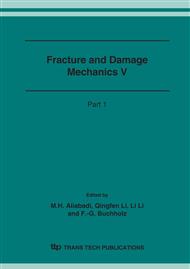p.1027
p.1031
p.1035
p.1039
p.1043
p.1047
p.1051
p.1055
p.1059
Reconstruction of the Material Probabilistic S-N Relations under Fatigue Life Following Lognormal Distribution I-without Given Confidence
Abstract:
Fatigue reliability theory has recently verified that the sampling size related effect should be taken into account by confidence (C). However, most of the historic probabilistic S-N curves are given to only consider the scattered regularity effect by survival probability (P). Therefore, a reconstruction method of the historic curves is investigated to consider the sampling size effect. An effort is made on addressing the true production that the sampling size is less than 20 for material specimens and 10 for structural component specimens. A Monte Carlo simulation approach is first established to reconstruct the test S-N data. And then, the P-C-S-N curves are reconstructed with a general maximum likelihood principle. The practice for 40Cr steel has clearly indicated that, beyond all doubt, the reconstructed curves has overcome the shortages of the historic data.
Info:
Periodical:
Pages:
1043-1046
Citation:
Online since:
November 2006
Authors:
Keywords:
Price:
Сopyright:
© 2006 Trans Tech Publications Ltd. All Rights Reserved
Share:
Citation:


